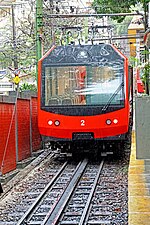Jardim Botânico, Rio de Janeiro

Jardim Botânico (English: Botanical Garden) is a wealthy residential neighborhood of Rio de Janeiro, Brazil, located north of Ipanema and Leblon, just across Lagoa Rodrigo de Freitas and east of Gávea. Jardim Botânico lies in the South Zone of Rio de Janeiro.The district got its name as it grew around the city's Botanical Garden. The residents are generally upper-middle to upper-class and do not live near a favela, which is rare in the city. It differs from most of Rio's neighbourhoods due to the large number of large detached houses, again not that common in the densely populated south zone. It is home to many Brazilian celebrities and the headquarters of the nationwide television network, Rede Globo. Many of Rede Globo's studios are in the neighbourhood. The main road in the borough is the Rua Jardim Botanico (Jardim Botanico Street). The neighborhood leads to Rio de Janeiro's large Tijuca Forest, using a road that winds up through the mountainous forest. One of Rio de Janeiro's most famous carnival blocs parades annually through the streets of Jardim Botanico. The bloc calls itself "Suvaco do Cristo", which translates to "Armpit of the Christ" because Jardim Botânico lies underneath the right armpit of Rio de Janeiro's most prominent landmark, Cristo Redentor (Christ the Redeemer) statue.
Excerpt from the Wikipedia article Jardim Botânico, Rio de Janeiro (License: CC BY-SA 3.0, Authors, Images).Jardim Botânico, Rio de Janeiro
Rua Corcovado, Rio de Janeiro Jardim Botânico
Geographical coordinates (GPS) Address Nearby Places Show on map
Geographical coordinates (GPS)
| Latitude | Longitude |
|---|---|
| N -22.963333333333 ° | E -43.222222222222 ° |
Address
Rua Corcovado
Rua Corcovado
02246-010 Rio de Janeiro, Jardim Botânico
Rio de Janeiro, Brazil
Open on Google Maps








